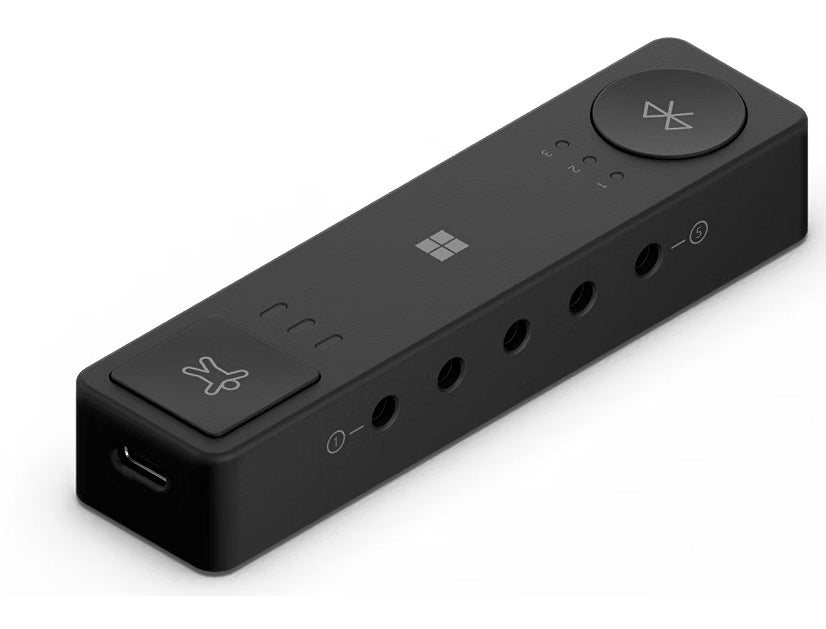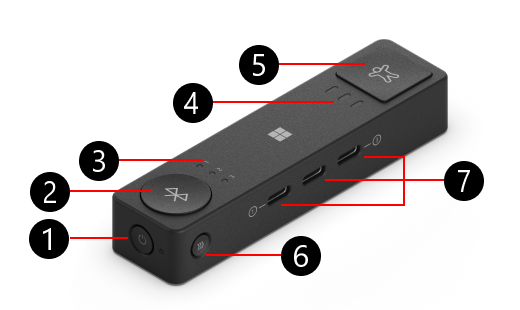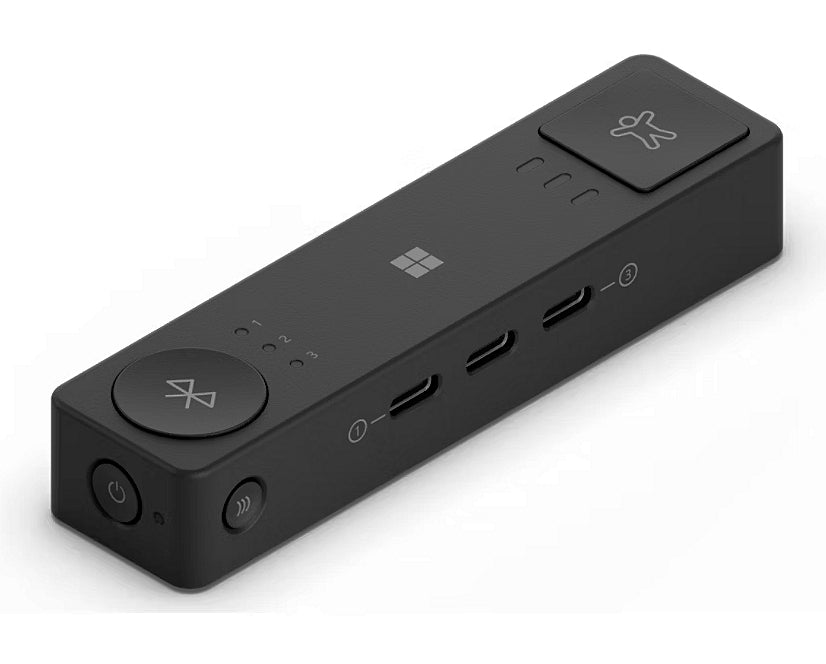
-
Power button
-
Bluetooth button
-
Bluetooth LED (3)
-
Profile LED (3)
-
Profile button
-
Pairing button
-
USB-C ports (3)
Microsoft Adaptive Hub with numbers to identify physical features, starting with the USB-C charging port.
- USB-C charging port
- 3.5 mm port (5)
Explanation of ports on the Adaptive Hub
- Your Adaptive Hub can be paired with Microsoft adaptive buttons and connected to switches made by other manufacturers. Here’s an explanation of the ports available on your Adaptive Hub.
Specifications
|
3.5 mm port (5 ports) |
Use this port to connect to other assistive tech switches. |
|
USB-C charging port |
Connect this port to a power-source with a USB-C cable to charge your Adaptive Hub. |
|
USB-C ports (3 ports) |
Connect to Microsoft adaptive buttons with a USB-C cable. When your Adaptive Hub is connected to power, these ports will also charge your buttons. |
|
Bluetooth button and Bluetooth LED (3 lights) |
Switch or pair to another PC or device when you press this button—the LED will tell you which device is connected. For more info, see How to connect the Adaptive Hub to your PC. |
|
Power button |
Turn your Adaptive Hub on and off. |
|
Profile button and Profile LED (3 lights) |
Use this to switch between Profiles on your Adaptive Hub—the LED will tell you which profile is selected. For more info, go to How to use profiles with Microsoft Adaptive Hub. |
|
Pairing button |
This button pairs your Adaptive Hub to any of the adaptive buttons. For more info, go to How to use Microsoft adaptive buttons. |



